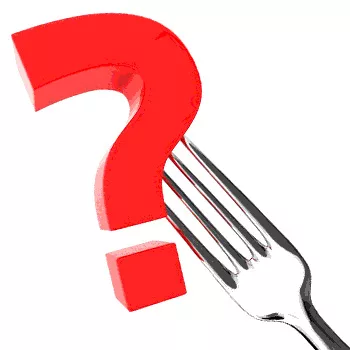When Did Food Become a Sin?

We’ve come to accept a “sin tax” on cigarettes, justified in part by the health consequences often paid for from our tax dollars. A sin tax on alcohol was a little harder to swallow, but was in part accepted in lieu of absolute prohibition. But now it appears that food is the latest sin that warrants either higher taxation or prohibition altogether. Are these efforts appropriate, fair and do they even work?
As with many of the recent food initiatives, the claimed motivation behind the effort is to address obesity and its related co-morbidities. But there is a correlation between the size of the tax must be significant for any impact to occur. Further, studies show that the impact is nothing near what is expected. Finally, there is a little discussed socio-economic impact on the poor which is not corrected by the use of these extra taxes.
Efforts at restrictions or taxation:
In 2012, New York launched its infamous restriction on the sale of sugary drinks over 16 oz. In June 2014, the highest court in New York held that the restriction was arbitrary and capricious.
Today, 33 states tax soda or sugar sweetened drinks. But the amount of tax is so low, an average of only 5.2 percent of the overall sales tax, that most of us don’t even realize we are being taxed and thus there is no impact on behavior.
Many foreign countries tax not only soda and sweetened drinks, but other sugary foods or “junk” food. Norway has had higher duties on sugar, chocolate and sweet drinks since 1981. Australia has a 10 percent tax on soft drinks, confectionary, biscuits and baked goods. Beginning in 2014, Mexico approved a new tax on junk food. Mexico already had an 8 cent per liter tax on soft drinks. In 2014, they added an 8 percent tax on high-calorie food having more than 275 calories per 100 grams.
Recently, the most widespread plan this country has seen before was approved and initiated by the Navajo Nation, an area covering Utah, Arizona and New Mexico. Called the Healthy Dine Act of 2014, the new law will initiate a 2 percent sales tax, in addition to the current 5 percent sales tax on sweetened beverages and food items deemed to have minimal-to-no nutritional value. As a trade-off, the Act will remove the 5 percent sales tax on fresh fruits and vegetables.
Socio-Economic Impact:
The Healthy Dine Act in the Navajo Nation is a working example of the class based, socio-economic hardship created by these tax plans which appear to be well intentioned on their face. Within the Navajo Nation there exists a 42 percent unemployment rate and nearly half of those over the age of 25 live below the federal poverty level. Country wide, there are currently 45.3 million people living in poverty, with 19.9 percent of those being children under the age of 18. It is well documented that populations in poverty have higher rates of obesity and associated health ramifications. So what does the new efforts to tax us into healthy eating have to do with economic class?
Have you visited an inner-city neighborhood recently and looked for a grocery store, especially one with a good produce department? They rarely exist without a bus ride across town. Many of our poor live in areas where there is little else available to them besides the junk food or sodas being targeted. These areas are known as “food deserts,” urban neighborhoods and rural towns without ready access to fresh, healthy and affordable food. With access to only foods deemed unhealthy, these taxation programs do little except to raise the prices on the junk food the poor necessarily are forced to eat. And with the absence of choices, the tax program will do nothing to change the behavior of those in most need of nutritional help.
While communities raising taxes, whether a little or a lot, can quickly cite to the increased revenue which will be raised, they are usually short on providing details on how that additional revenue will be used. How about reinvesting in these food deserts, providing education and incentivizing good groceries with fresh fruits and vegetables to relocate where the poor can make healthy choices?
Do these taxation programs work?
One assumption behind these programs is that the consumer will take the funds they would have spent on junk food and use it to make healthier choices. And it assumes that any changes made will continue, rather that reverting when the sticker shock wears off. But that is not necessarily the case.
Studies predicted that a 1 percent per ounce tax would result in a 20 percent decrease in consumption. After Mexico enacted its soda tax, there was a 2 percent drop in consumption per capita, a decrease which reverted back almost to original numbers after a year. Studies of sweetened tax policies in Europe show a 0 percent to 2.6 percent drop in consumption.
Rather than give up on the concept of changing consumer behaviors by penalizing them with taxes, advocates argue that the key is to simply make the tax increase high enough so that consumers cannot ignore the warning. Some have even suggested a sin tax on soda and junk food as high as that on cigarettes, in the range of 70 percent.
While obesity and its resulting medical complications are a significant problem for both individuals and society as a whole, aren’t there better options that simply taking money and stuffing it into government’s coffers? What about education and availability to healthy food? Safe areas in which to exercise? Let’s not presume that a population as intelligent as that in the United States is purposefully harming itself if it had the resources and options to do better.
Kathy Hardee, Esq., is co-chair of the Food & Agriculture Industry Group at Polsinelli, PC, which is composed of a team of attorneys from every legal practice area and who each have a focused background in the food industry.
Looking for quick answers on food safety topics?
Try Ask FSM, our new smart AI search tool.
Ask FSM →








